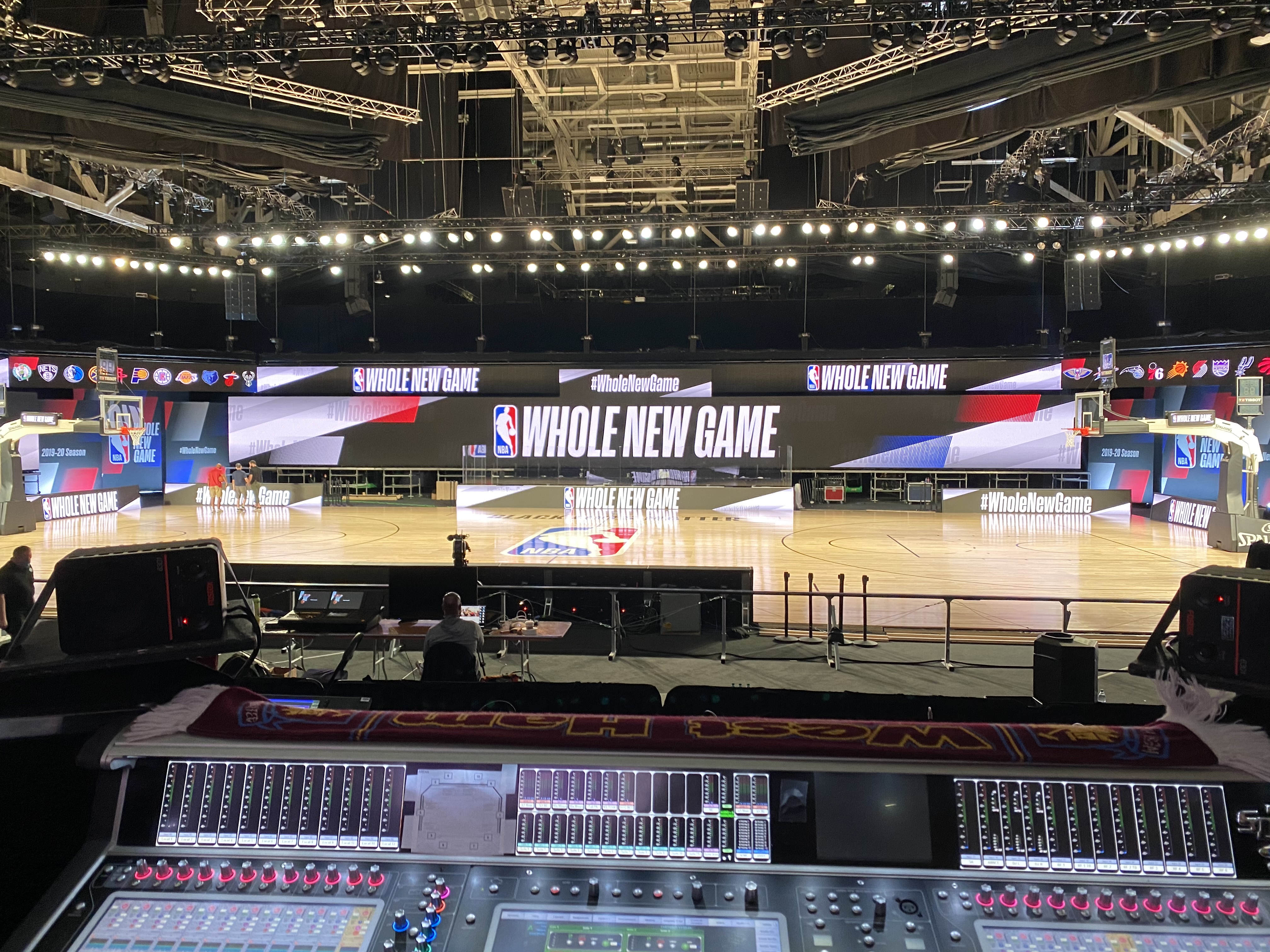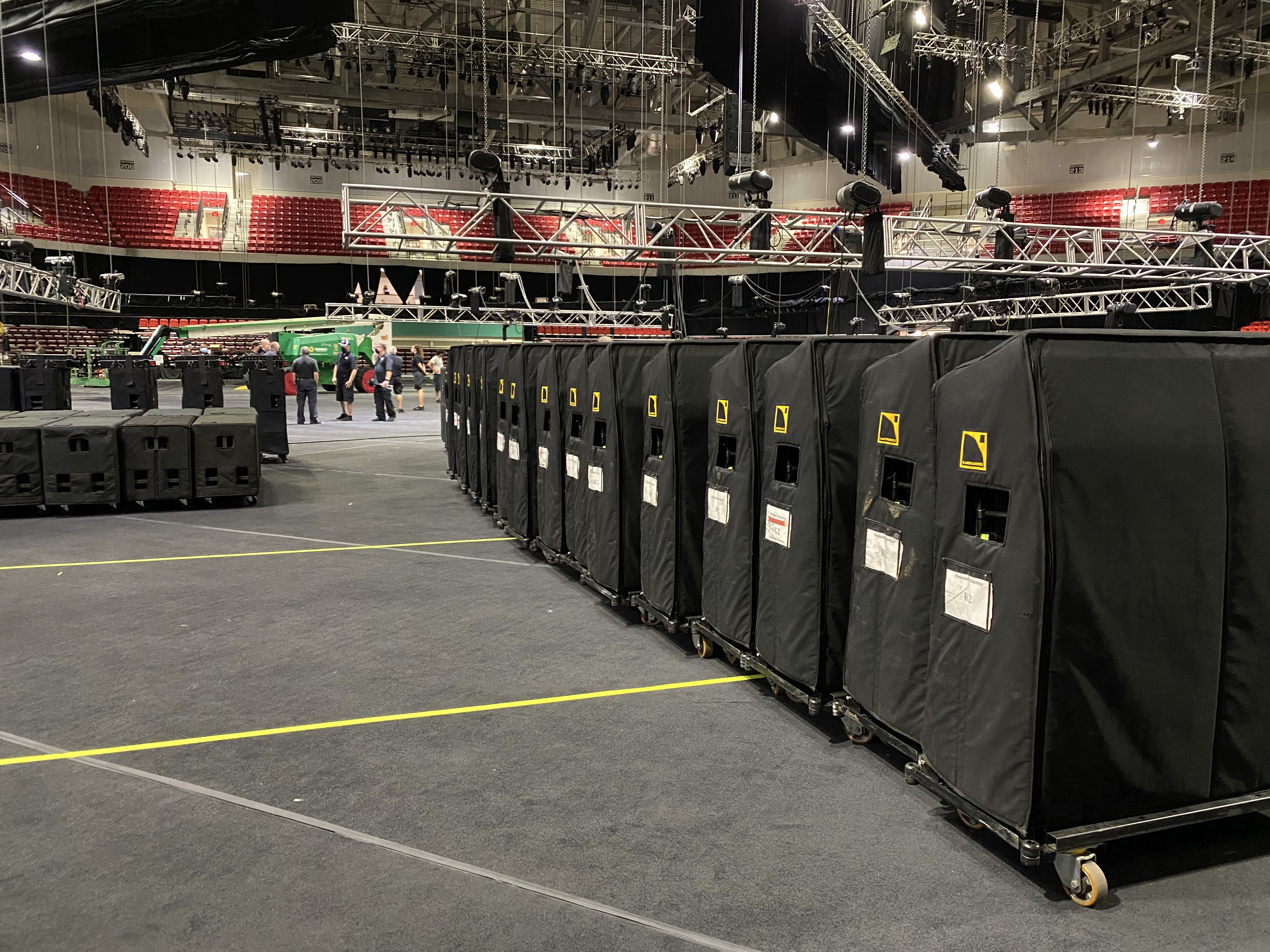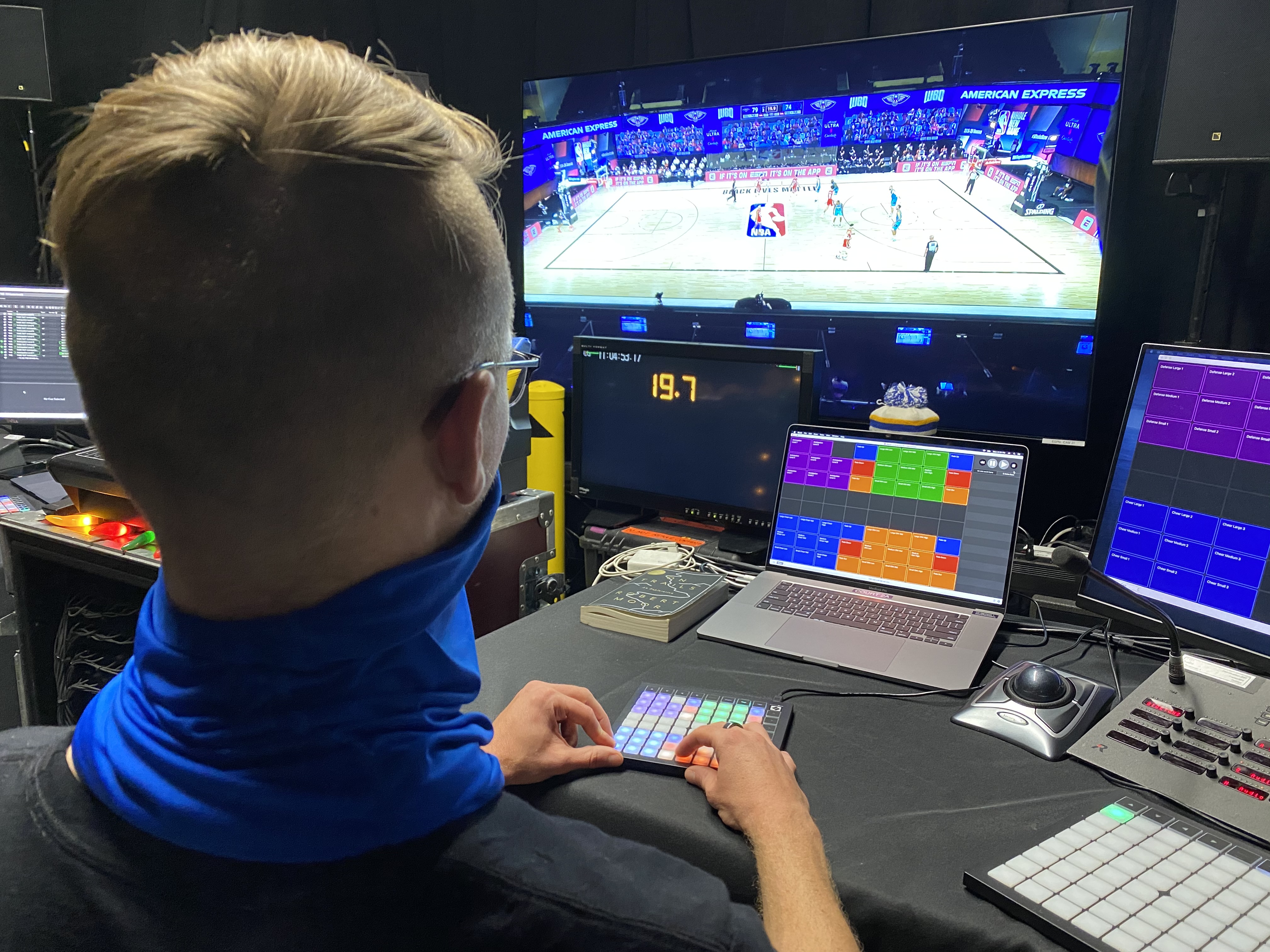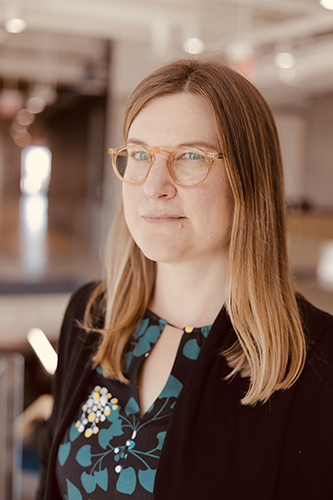Bringing the Sound of the Crowd to the NBA Bubble
Not every COVID-19-era sports venue was reopened with a player-centric experience as the starting point, but over time it became obvious that the players need atmosphere, fans, and the unique energy of real human emotion that comes from collective cheers, boos, gasps, and sighs.
Many will remember LeBron James at the start of the NBA shutdown saying he’d never play without fans present. That conundrum is what Mark Dittmar, VP of Firehouse Productions, had in mind when he developed a vision for how to recreate the feeling of spectator presence on the court, even if the seats were mainly empty.
Dittmar wondered if it was possible to emulate the arena experience so that a player like James would be comfortable enough to perform their job, despite being in a large empty hall. “The goal was to put some energy back in the room and make it real enough that the players are able to be excited and play their games,” he explains.
He started to evolve the idea of a fully immersive soundscape within the three arenas in the NBA “bubble” at the ESPN Wide World of Sports Complex at Walt Disney World in an attempt to recreate at least the sound of an authentic sporting event. Each venue would have essentially the same audio setup, so the athletes could enjoy the same audio sensations and for familiarity and ease of operation for the Firehouse team and NBA producers.
 Each venue would have essentially the same audio setup, so not only would the athletes enjoy the same audio sensations, but the system would be familiar and easy to hop in and operate for the Firehouse team and NBA producers.
Each venue would have essentially the same audio setup, so not only would the athletes enjoy the same audio sensations, but the system would be familiar and easy to hop in and operate for the Firehouse team and NBA producers.
The system design ended up being a 10.6 surround setup encircling the arena floor — aimed at the court instead at the fans, as would normally be the case (see here for more detail). A separate system was also installed for some in-house seating for COVID-19-tested audience members from the bubble community. Every array was hung carefully around a massive LED videowall for the remote audience and all the lighting and broadcast gear required to bring the bubble action to fans.
The audio design was at first a little too perfect. Fans don’t cheer in perfect stereo and chants don’t happen in perfect unison; instead they start in different parts of the arena and grow slowly. Dittmar requested that Firehouse Director of Engineering Paul Bauman “mess things up” to make the experience of playing on the court feel more realistic.
To achieve this, Bauman took an analytical approach, using Los Angeles’ Staples Center as an example in his use of audio simulation software to approximate audience noise from the lower and upper bowls. The arrays that were replicating sound from the upper bowl were delayed so the sound arrived later down on the court, and higher frequencies were rolled off a bit so things sounded a little more natural. “The goal was to make it as realistic as possible,” Bauman says.
 The system design ended up being a 10.6 surround setup that encircles the arena floor — aimed at the court instead of at the fans, as would normally be the case. A separate system was also installed for COVID-tested audience members from the Bubble community.
The system design ended up being a 10.6 surround setup that encircles the arena floor — aimed at the court instead of at the fans, as would normally be the case. A separate system was also installed for COVID-tested audience members from the Bubble community.
With the “messed up” sound created, the next issue was crafting a convincing crowd noise to fill the arena and add some spectator-style energy. The process began with a hope that maybe crowd sound effects from the video game series NBA 2K would suffice, but those were quickly ruled out due to the presence of “contamination” such as sneaker squeaks and referee whistles. So Firehouse contracted Sonic Designs to create all new audio stems that would be triggered by the atmosphere production team, comprising two “sweeteners,” a DJ, and an NBA producer.
The Firehouse team studied the latency to ensure the crowd noise synced with the live action on the court. “We watched a bunch of footage and went through the computer .wav files and timed how long it takes from the time a ball goes in the basket to when a real crowd starts reacting,” Dittmar explains. “We took that number and checked it against video, camera, and conversion latency to make sure that a cued cheer would arrive in time to sound real.”
The work done by Sonic Designs and Firehouse’s QLab programmers involved coming up with a full range of crowd noises (a “base murmur” was created, intended to begin a full 90 minutes before play, so players don’t walk into a totally silent atmosphere), as well as cheers, boos, chants, and all the other sonic elements that fans and players expect without knowing they expect it.
“We realized that the cheering itself is so complicated that we sort of have a pyramid of sound, starting with murmur and room tone and building up from that,” says Dittmar. “When you pick apart how an audience cheers, it is more than just firing a cheer. They collectively take a breath and they get more excited before they cheer.” In addition, operators had to be able to immediately pull out of a cue if excitement led to despair, as emotions tend to go back and forth rapidly in basketball.
Each of the effects had to be built with multiple layers of intensity, and with a very natural, human-generated sound. A crowd doesn’t respond on a perfect music grid, so some more “messing up” was required here, too. Ellen Fitton, Associate Sound Designer with Sonic Designs, and Sonic Designs’ Audio Designer Dan Gerhard dove into the task, deeply investigating the many nuances of crowd reactions in recordings provided by the NBA. The league also provided a narrative for each recorded game, getting into the specifics of why the crowd was reacting the way it did. Sentiments and game context can really change a cheer; for example, if someone is on a comeback, each shot matters even more.
Creating the many layers of reaction was truly a feat of creative sound design, and Sonic Designs learned a lot about the very subtle differences between “ah’s and “oo's. Early in the fast-tracked project, there was some confusion about the positive or negative nature of each of these utterances, but then a breakthrough came when Fitton realized, “It’s about the pitch —does it go up or does it go down? Because sometimes there’s an oo that goes up, and often there’s an oooo that goes down.”
With the understanding that it was less about the specific word and more about how it was expressed, the layers of positive and negative reactions were a bit easier to assemble. There were a whole lot of reactions created by Sonic Designs, including specially curated Foley effects using actual thunder sticks, all of which were loaded into QLab so operators could select and build layer upon layer of crowd reaction.
“We’re running close to 1800 separate cues now,” Dittmar says. “And we’re using the randomizing features in QLab very heavily, where if you hit medium cheer, it looks to a library of medium cheers and randomly pulls five or 10 of them out. Then it randomly throws the stereo to different parts of the 10-zone surround system.”
To help maintain the home crowd advantage, the NBA decided to have “home” and “away” games, even though the teams never traveled away from the bubble. From an audio production perspective, that meant only the home team would get the cues for “de-fense!” and team-specific chants (for more on the Defense chant, watch the AVIXA® Webinar featuring Dan Gerhard and Ellen Fitton, along with Willem Boning and Elizabeth Valmont from Arup: "Reimagining Stadium Audio and Acoustics." The energy of the audience could really be customized to support a specific team.
In fact, the operators don’t actually change from game to game. There isn’t a designated home and away operator. Instead, the operators are each assigned to a certain layer of atmosphere, starting with the basic ambient bed, which is handled by one of the two sweeteners working the game, and then going to the anticipation cues, added by the another sweetener. The NBA DJ has the “defense” cue and other chants. Then an NBA producer handles the delicate tasks of negative reactions. “The one thing our guys didn’t touch were boos or ‘airball’ or things like that,” Gerhard says. “We didn’t want any control of the pejorative.”
 Behind the scenes, sweeteners trigger crowd reactions from a vast trove of 1800 separate cues in QLab, which are then randomized and sent to different parts of the 10-zone surround system to create a natural effect.
Behind the scenes, sweeteners trigger crowd reactions from a vast trove of 1800 separate cues in QLab, which are then randomized and sent to different parts of the 10-zone surround system to create a natural effect.
The NBA production has continued to evolve as the league heads into its history-making, latest-ever playoff season. The crowd noise is getting a lot of positive feedback from players and coaches. And the operators are loving the energy they can build. Reviews from the fans have been positive as well.
“We really wanted people to be able to listen to it and say, wow, that sounds like people were there,” Gerhard says. Even during the earliest listening tests, the effect produced by the sound setup was stunning, he says. “I turned to Ellen one night on the court and I said, ‘You know, I know this is all made up and I’m believing it.’”
Fitton agrees, “After years of experience, we have a pretty good sense of how what we create is going to translate through a PA into a venue space. However, a big part of what we were doing with this was actually ‘creating’ the space itself. As such, it was really valuable to be on site and hear the soundscape in the actual environment and understand how the content was reacting in this unique situation.”




